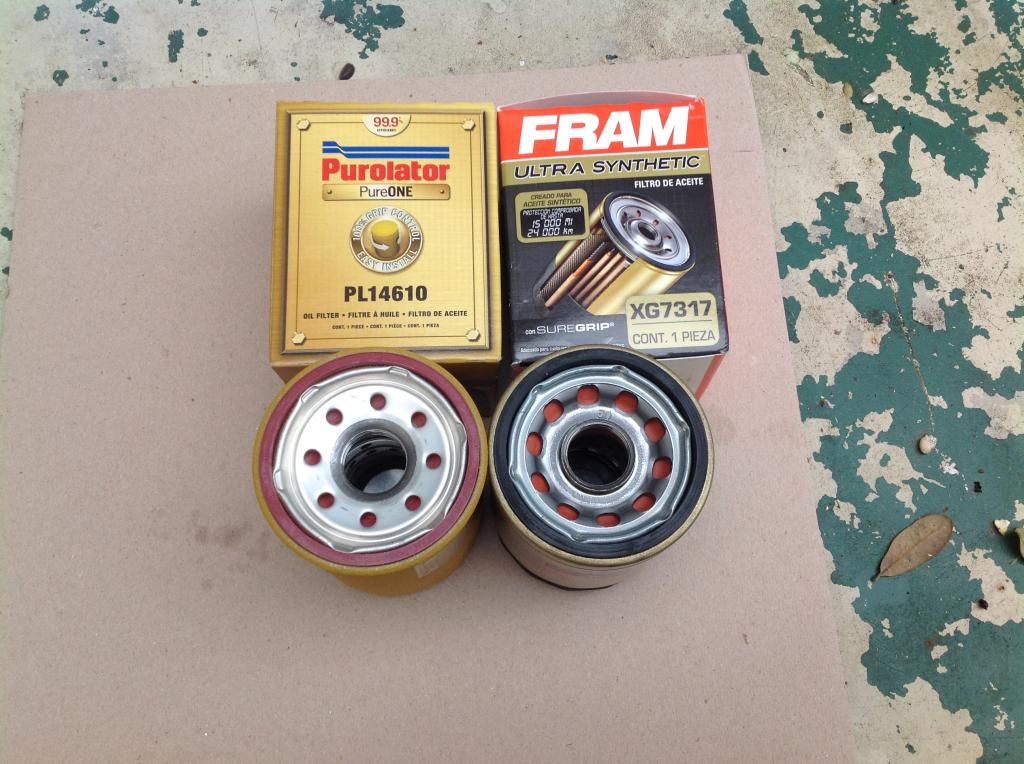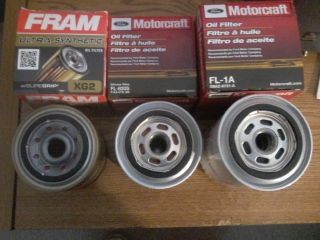Originally Posted By: dnewton3
For those of you who are doubters, I suggest this one little experiment to change your mind:
Go out and take your filter off and "bypass" the filter function all together with any home-made system you can contrive in your garage. Then park outside tomorrow morning in the cold and give 'er a start. If your theory of filter restriction is correct, then the absense of the filter should present absolutely no oil flow resistance whatsoever. Therefore your oil pressure gage should be a zero, even at cold start with 15w-40. Right? I mean, for the theory of filter restriction being a major contribution to overall system restriction to be correct, then removing the restriction should allow complete and total ever-loving uninhibited flow, right? Perhaps now you understand how silly this is? Pressure is resistance to flow in a dynamic fluid system. So if the filter is the supposed main contributor, and if you remove it, then all pressure should be lost upon it's removal. Your engine should have at or near zero PSI at start up, in the cold, with thick lube, and be able to maintain that status of ultra low pressure as the oil moves through it's vis range with temp changes, as well as all rpm of engine operation. This is the ONLY result that could possibly be true IF one believes the filter is the main restriction of lube flow in an engine.
Actually, you have it backwards. There are two common points to measure oil pressure. One is between the pump and the filter, and the other is between the filter and the rest of the engine.
Normally, oil pressure is sensed from a tap in the block, which is between the filter and the rest of the engine. So, you'll get zero there only when the filter and its bypass are completely blocked (or the pickup tube screen is blocked), i.e., block oil pressure = pump pressure minus filter drop. The more the pressure drop at the filter, the lower the block oil pressure. Block oil pressure also = pressure from resistance to flow after the filter. They're the same pressure number, because it's the same point in the system.
I think that you're thinking of pressure between the pump and the filter, which is sensed if you're measuring pressure using an oil sandwich plate. There, the more the pressure drop at the filter, the higher the apparent oil pressure. Useless to sense except for the difference between the two pressures, which is the "delta P" of the filter.
For those of you who are doubters, I suggest this one little experiment to change your mind:
Go out and take your filter off and "bypass" the filter function all together with any home-made system you can contrive in your garage. Then park outside tomorrow morning in the cold and give 'er a start. If your theory of filter restriction is correct, then the absense of the filter should present absolutely no oil flow resistance whatsoever. Therefore your oil pressure gage should be a zero, even at cold start with 15w-40. Right? I mean, for the theory of filter restriction being a major contribution to overall system restriction to be correct, then removing the restriction should allow complete and total ever-loving uninhibited flow, right? Perhaps now you understand how silly this is? Pressure is resistance to flow in a dynamic fluid system. So if the filter is the supposed main contributor, and if you remove it, then all pressure should be lost upon it's removal. Your engine should have at or near zero PSI at start up, in the cold, with thick lube, and be able to maintain that status of ultra low pressure as the oil moves through it's vis range with temp changes, as well as all rpm of engine operation. This is the ONLY result that could possibly be true IF one believes the filter is the main restriction of lube flow in an engine.
Actually, you have it backwards. There are two common points to measure oil pressure. One is between the pump and the filter, and the other is between the filter and the rest of the engine.
Normally, oil pressure is sensed from a tap in the block, which is between the filter and the rest of the engine. So, you'll get zero there only when the filter and its bypass are completely blocked (or the pickup tube screen is blocked), i.e., block oil pressure = pump pressure minus filter drop. The more the pressure drop at the filter, the lower the block oil pressure. Block oil pressure also = pressure from resistance to flow after the filter. They're the same pressure number, because it's the same point in the system.
I think that you're thinking of pressure between the pump and the filter, which is sensed if you're measuring pressure using an oil sandwich plate. There, the more the pressure drop at the filter, the higher the apparent oil pressure. Useless to sense except for the difference between the two pressures, which is the "delta P" of the filter.





